Test Bank for Police Administration Structures Processes and Behavior 8th Edition Charles R Swanson Download
$38.00
Title: Test Bank for Police Administration Structures Processes and Behavior 8th Edition Charles R Swanson Download
Edition: 8th Edition
ISBN-10: 0135121035
ISBN-13: 978-0135121030
- Description
- Reviews (0)
Description
You will receive this product immediate after placing the order
***THIS IS NOT THE ACTUAL BOOK. YOU ARE BUYING the Test Bank in e-version of the following book***
Title: Test Bank for Police Administration Structures Processes and Behavior 8th Edition Charles R Swanson Download
Edition: 8th Edition
ISBN-10: 0135121035
ISBN-13: 978-0135121030
– The test bank is what most professors use an a reference when making exams for their students, which means there’s a very high chance that you will see a very similar, if not exact the exact, question in the test!
– The file is either in pdf, doc, rtf or zipped in the package and can easily be read on PCs and Macs.
– Delivery is INSTANT. You can download the files IMMEDIATELY once payment is done.
We also faced similar difficulities when we were students, and we understand how you feel.
But now, with the Test Bank for Police Administration Structures Processes and Behavior 8th Edition Charles R Swanson Download, you will be able to
* Anticipate the type of the questions that will appear in your exam.
* Reduces the hassle and stress of your student life.
* Improve your studying and also get a better grade!
* Get prepared for examination questions.
* Can save you time and help you understand the material.
This is the quality of service we are providing and we hope to be your helper.
Delivery is in the next moment. Test Bank is accurate.
If you have any questions, or would like a receive a sample chapter before your purchase, please contact us at inquiry@testbanksafe.com
Chapter 1
The Evolution of Police Administration
Chapter 1 Multiple Choice
Choose the one alternative that best completes the statement or answers the question.
1. The rise of unified, full-time police departments in America was influenced by events in:
a. France.
b. England.
c. The former Soviet Union.
d. Ireland.
Answer: b
Objective: State how events in England influenced the development of unified, full-time police departments in the United States.
Page number: 5
Difficulty: Basic
2. What is the name of the first full-time police agency in London?
a. London Metropolitan Police
b. English Special Forces
c. British Crime Council
d. London Police Department
Answer: a
Objective: State how events in England influenced the development of unified, full-time police departments in the United States.
Page number: 5
Difficulty: Basic
3. A tightly controlled political party headed by a boss or small autocratic group whose purpose is to repeatedly win election s for personal gain, often through graft and corruption, is known as:
a. Patronage.
b. Partisan government.
c. Machine politics.
d. Mob-influenced politics.
Answer: c
Objective: Define and describe machine politics in the 19th century.
Page number: 9
Difficulty: Basic
4. Who is the father of modern law enforcement?
a. August Vollmer
b. Robert Peel
c. O.W. Wilson
d. J. Edgar Hoover
Answer: a
Objective: Discuss the contributions of Chief Gus Vollmer.
Page number: 14
Difficulty: Basic
5. What efforts did Vollmer utilize to improve the caliber of police personnel?
a. Police training
b. Psychological testing
c. Recruiting college students
d. All of the above
Answer: d
Objective: Discuss the contributions of Chief Gus Vollmer.
Page number: 16
Difficulty: Basic
6. Particularly after 1965, the hallmark of attempts to promote police professionalization centered on:
a. Civilian review boards.
b. A code of ethics
c. Standards of admission
d. Education
Answer: d
Objective: Explain why the concept of a police profession is so important.
Page number: 32
Difficulty: Basic
7. One of the major conclusions of the Kansas City Preventive Patrol Study was:
a. Response time varied greatly with the level of routine patrol.
b. Citizens’ fear of crime was altered by the level of routine patrol.
c. Level of patrol was directly correlated with the incidence of traffic accidents.
d. A statistically weak correlation between reported crime and level of routine patrol.
Answer: d
Objective: Name the events that fostered research on policing during the 1970s.
Page number: 34
Difficulty: Basic
8. The ________ described how investigations in major metropolitan police agencies were organized and managed. This study recommended a larger role for police officers in conducting preliminary investigations.
a. Kansas City Patrol Experiment
b. NIJ Proactive Patrol Study
c. RAND Criminal Investigation Study
d. FBI Investigation Report
Answer: c
Objective: Name the events that fostered research on policing during the 1970s.
Page number: 34
Difficulty: Basic
9. During the 1960s, money was made available from ________ to start junior college and university criminal justice programs.
a. CALEA
b. NOBLE
c. PERF
d. LEAA
Answer: d
Objective: Explain why the concept of a police profession is so important.
Page number: 32
Difficulty: Basic
10. The independent accrediting authority for law enforcement is:
a. IACLEA.
b. NOBLE.
c. AALE.
d. CALEA.
Answer: d
Objective: Name the events that fostered research on policing during the 1970s.
Page number: 35
Difficulty: Basic
11. Which of the following is not cited as a benefit to law enforcement accreditation?
a. Personnel costs can be reduced
b. Liability insurance costs can be reduced
c. Community pride and confidence in the agencies is stimulated
d. Can be used as a tool in attracting new businesses to a community
Answer: a
Objective: Name the events that fostered research on policing during the 1970s.
Page number: 35
Difficulty: Intermediate
12. Which of the following was in impact on policing as a result of WWII?
a. The Pendleton Act
b. An increase in educational requirements for police
c. The adoption of residency requirements for police
d. A shortage of experienced officers
Answer: d
Objective: State how World War II affected law enforcement.
Page number: 25
Difficulty: Basic
13. What is the name of the persons who, during WWII, patrolled to make sure that no lights were showing during “black outs”?
a. Air raid wardens
b. Carpetbaggers
c. Muckrackers
d. Civil patrol
Answer: a
Objective: State how World War II affected law enforcement.
Page number: 26
Difficulty: Basic
14. What law enforcement administrator studied under Gus Vollmer and wrote the “Bible” of police administration?
a. Benjamin “Pap” Singleton
b. Sir Robert Peel
c. O.W. Wilson
d. George Kelling
Answer: c
Objective: Discuss the contributions of Chief Gus Vollmer.
Page number: 16
Difficulty: Basic.
15. Following World War II, more women were hired as police officers, working specifically with what category of offenders?
a. Bank robbers.
b. Juvenile delinquents.
c. Homeless veterans.
d. All of the above.
Answer: b
Objective: State how World War II affected law enforcement.
Page number: 25
Difficulty: Intermediate
16. Which of the following is not a criterion for a profession?
a. An organized body of theoretically grounded knowledge
b. A code of ethics
c. Prestige
d. A strong work value
Answer: d
Objective: Explain why the concept of a police profession is so important.
Page number: 14
Difficulty: Intermediate
17. The Pendleton Act of 1883 sought to eliminate:
a. Merit selection.
b. The political spoils system.
c. The “good old boy” government
d. Testing for promotion.
Answer: b
Objective: Identify the worst and the best things about the patronage/spoils system.
Page number: 16
Difficulty: Difficult
18. Prohibition was established by passage of:
a. USA PATRIOT Act.
b. Pendleton Act.
c. Volstead Act.
d. Temperance Act.
Answer: c
Objective: Describe the impact of prohibition on policing.
Page number: 19
Difficulty: Basic
19. Which of the following is not part of what the text refers to as the “trilogy”?
a. Kansas City Preventive Patrol Experiment
b. Rand Criminal Investigation Study
c. Team Policing
d. Community Oriented Policing
Answer: d
Objective: Name the events that fostered research on policing during the 1970s.
Page number: 34
Difficulty: Difficult
20. What agency was formed to archive and disseminate the rapidly growing body of criminal justice knowledge being generated by research?
a. NCIC.
b. FCIC.
c. NIBRS.
d. NCJRS.
Answer: d
Objective: Name the events that fostered research on policing during the 1970s.
Page number: 35
Difficulty: Intermediate
Chapter 1 Fill in the Blank
Write the word or phrase that best completes each statement or answers the question.
1. A ________ is someone who smuggled illegal alcohol during prohibition.
Answer: bootlegger
Objective: Describe the impact of prohibition on policing.
Page number: 19
Difficulty: Basic
2. The rise of unified, full-time police departments in America was influenced by events in ________.
Answer: England
Objective: State how events in England influenced the development of unified, full-time police departments in the United States.
Page number: 5
Difficulty: Basic
3. Illegal bars called ________ were established during prohibition.
Answer: speakeasies
Objective: Describe the impact of prohibition on policing.
Page number: 19
Difficulty: Basic
4. The Ku Klux Klan was formed by ________ veterans who were bored.
Answer: Confederate
Objective: Describe the Black Codes and Jim Crow laws.
Page number: 22
Difficulty: Intermediate
5. The Ku Klux Klan took over some of the duties of ________, who hunted down fugitive slaves.
Answer: slave patrols
Objective: Describe the Black Codes and Jim Crow laws.
Page number: 22
Difficulty: Intermediate
6. During the 1950s and 1960s, some southern police departments addressed the problem of the ________, in which minority police officers were treated inferiorly than white officers.
Answer: unequal badge
Objective: Explain the unequal badge problem.
Page number: 28
Difficulty: Intermediate
7. The Law Enforcement Education Program provided up to $2,400 a year to help defray ________ costs.
Answer: education
Objective: Explain why the concept of a police profession is so important.
Page number: 32
Difficulty: Intermediate
8. The formulation of the federal ________ created an easily accessible body of cutting-edge information for criminal justice students, scholars, and practitioners.
Answer: National Criminal Justice Reference Service (NCJRS)
Objective: Name the events that fostered research on policing during the 1970s.
Page number: 35
Difficulty: Intermediate
9. Community oriented policing is the development of police strategies and programs in partnership with ________ in order to deliver custom-tailored police services to problems.
Answer: communities
Objective: Define COP, ZTP, CompStat, and EBP.
Page number: 36
Difficulty: Basic
10. Evidence-based policing is based on ________ that suggests which strategies in policing provide the most successful outcomes.
Answer: research
Objective: Define COP, ZTP, CompStat, and EBP.
Page number: 36
Difficulty: Basic
Be the first to review “Test Bank for Police Administration Structures Processes and Behavior 8th Edition Charles R Swanson Download”
You must be logged in to post a review.


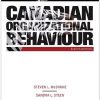
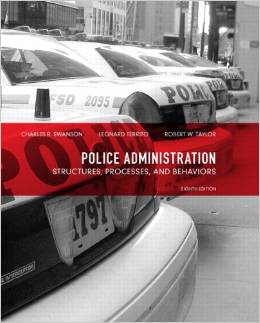


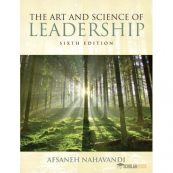
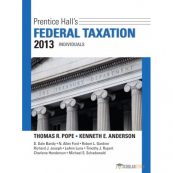
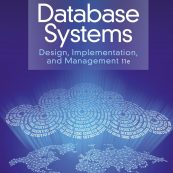
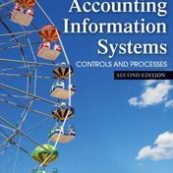

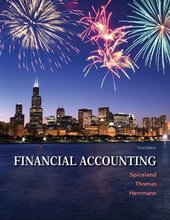
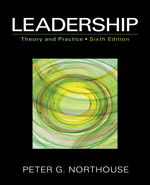
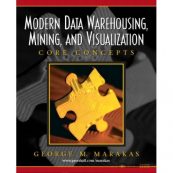
Reviews
There are no reviews yet.